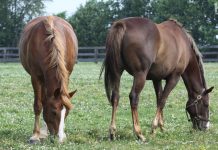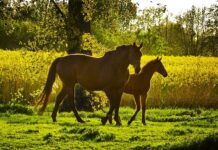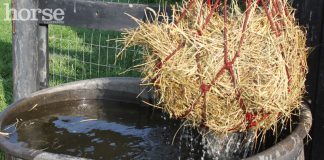 Getting your pony’s diet right is one of the most important parts of horse care. What he eats affects his health and how well he performs under saddle. By understanding the best diet for your horse, you can help him feel his best. The easiest way to begin is to decide which of three categories your horse falls in: overweight, underweight, or just right. Read on to learn about the right feeding guide for your horse.
Getting your pony’s diet right is one of the most important parts of horse care. What he eats affects his health and how well he performs under saddle. By understanding the best diet for your horse, you can help him feel his best. The easiest way to begin is to decide which of three categories your horse falls in: overweight, underweight, or just right. Read on to learn about the right feeding guide for your horse.
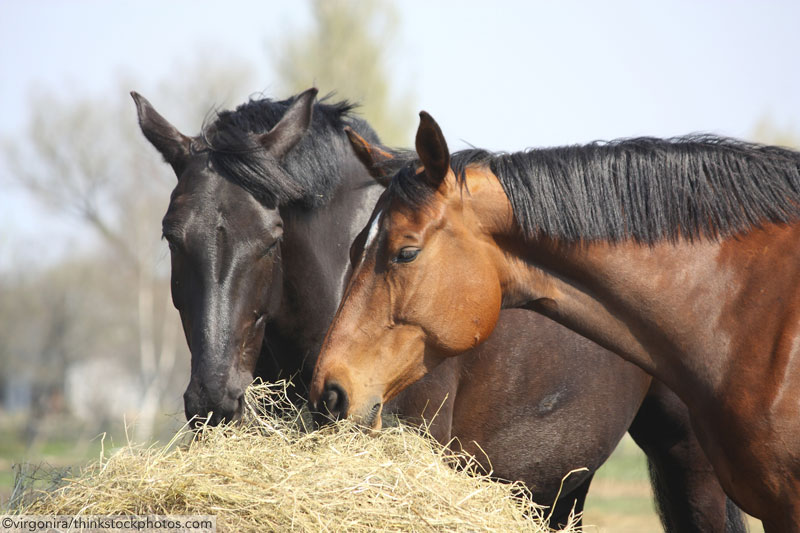
Feeding Guide: Overweight Horse
The lovable, round pony is what’s known as an “easy keeper”: he eats the same diet as everyone else and stays plump and roly poly.
Although cute, being overweight is unhealthy for horses and ponies. It can contribute to long-term problems and even diseases. If your horse is too fat, it’s important that he lose some weight.
The formula is the same as for people: eat healthier and exercise more! An overweight pony should not be getting fed grain. Switch him to a ration balancer, which still contains vitamins and minerals but not extra calories.
If he eats hay, he should not be eating alfalfa, which packs the most calories per pound. Feed a good-quality grass hay instead. If he is still not shedding weight, you may have to feed less. Always serve at least two meals per day, and if your horse eats too fast, put the hay in a small-hole net that will make his meals last longer. Hungry ponies with nothing to eat can be very crafty when they’re upset!
If your horse lives on good-quality pasture some or all of the time, he will probably have to start wearing a grazing muzzle if you’re going to win the weight war. This will limit his intake so he can’t put on the pounds.
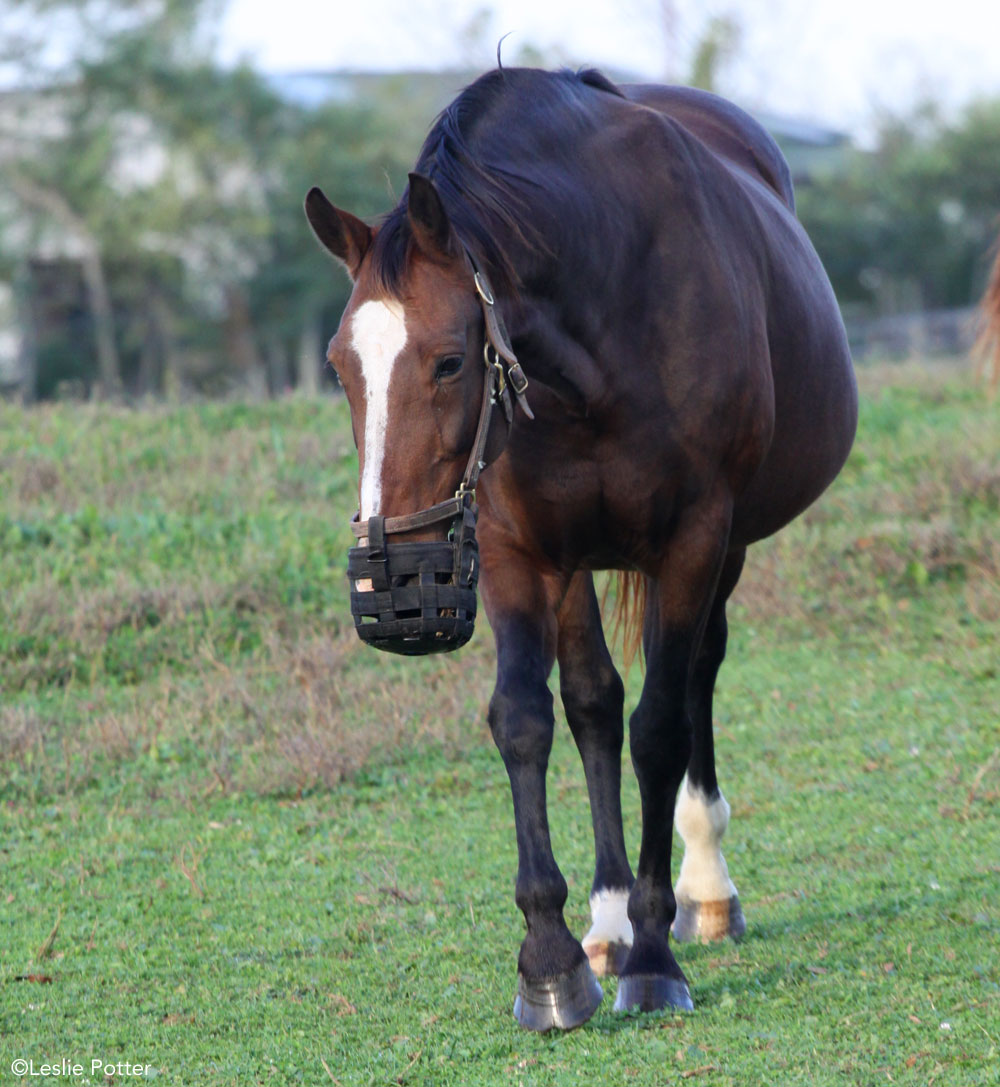
Finally, make sure your horse gets plenty of exercise. Ride at least three to four times a week for 30 to 60 minutes. If you can do more days, even just longeing, this is a huge help with burning calories.
Feeding Guide: Underweight Horse
If you can see your horse’s ribs, he is underweight. Have your vet check him out first to make sure there is no underlying problem, such as ulcers or a disease. If he is otherwise healthy, then he’s just a hard keeper.
A hard keeper is the most straightforward weight problem to fix. He just needs to eat more calories! See if your barn will let you add another feeding of hay to his menu, and switch from grass hay to alfalfa hay.
Next, you’ll want to find the right source of concentrated calories to give him an extra boost. There are many grain mixes for horses available at the feed store that contain plenty of calories if fed according to the label (usually at least 5 pounds per day). If your horse is very frisky and high-strung, look for a “fat and fiber” feed instead; these feeds use fat sources instead of grain to boost calories.
You may have realized that it is more expensive to feed a hard keeper, especially if you are going through a $25 (or more) bag of grain every week. Once he’s put on some weight, you can scale back his feed intake a little.
If you’re lucky enough to have access to excellent pasture grazing, this can be the fastest way to put weight on a horse. Particularly if allowed to graze 24/7, there are very few horses that don’t “bloom” with good condition after a month or two.
Feeding Guide: Just Right
Some horses have the good fortune of staying in perfect weight on their current feeding program. The right weight is when you can just feel your horse’s ribs, but not see them.
A good diet for maintaining weight if your horse does not have access to pasture is 2 percent of body weight per day in hay (20 pounds for a 1,000-pound horse). A grass hay or grass-alfalfa mix is good for horses that maintain their weight well.
If your horse is eating grain in the amount recommended on feed tag directions, he will also be getting balanced amounts of vitamins and minerals. If he does not get grain, you can feed a ration balancer or vitamin/mineral supplement to round out his needs.
Horses grazing on good pastures that are in good weight will be meeting all of their calorie, protein and vitamin needs. The addition of a trace mineral salt block will meet his salt and mineral requirements.
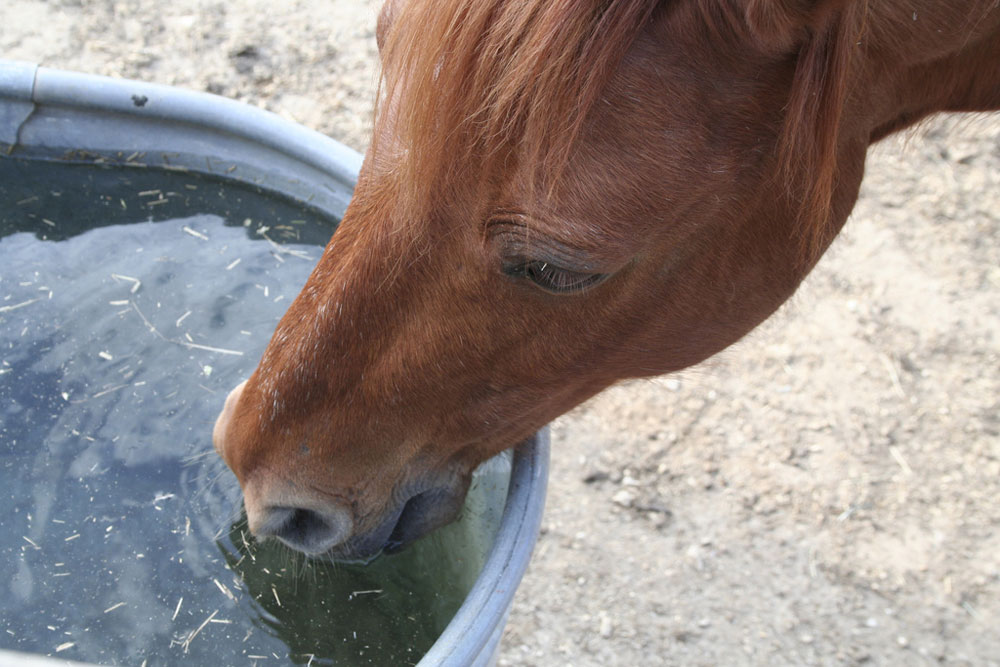
For Every Horse
All horses should have access to a salt block, which they will eat according to what they need, plus plenty of clean, fresh water at all times.
In the winter and summer be extra careful to make sure the water isn’t frozen or too hot out in the sun. If your pony doesn’t drink enough water (5 to 20 gallons per day), he can quickly become dehydrated and colic.
Whether you keep your pony at home or at a boarding stable, you can make sure he’s getting the best diet possible for his health. A healthy horse will keep you from having extra vet bills and give you more hours of enjoyment in the saddle.
Happy feeding!
This article originally appeared in the January/February 2018 issue of Young Rider magazine. Click here to subscribe!


